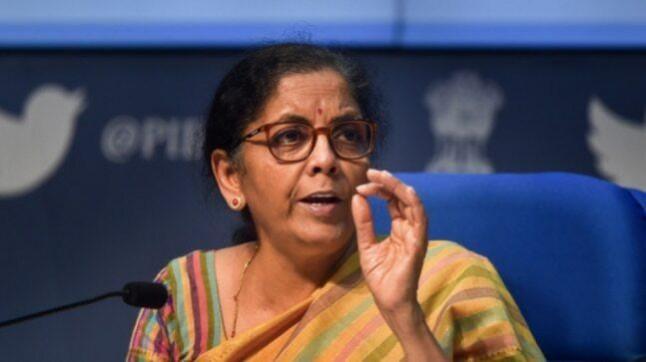All eyes on the Lok Sabha polls next year, rupee under depreciation pressure and Indian middle income group expecting relaxed tab slabs---Union Budget 2023 has been not only tough but even tricky for the current government. Did it meet the expectations? That depends on how high or low your expectations were.

With the crumbling Indian economy, and every sector screaming for development, from infrastructure to rural sector, from inflation to unemployment, it was going to be a battle for the limited means. Before presenting the budget in the Parliament on Wednesday, FM Nirmala Sitharaman, used heavy duty words and called it, "First budget of Amrit Kaal and the blueprint for India@100."
Rural push
Speaking in the Parliament, Finance Minister Sitharaman said, that the government will be implementing a scheme to supply foodgrains from January 1, 2023 to all Antaodaya and priority households for the next one year. In a recent report on Budget, finance research company Prabhudas Lilladher had predicted government's likely push rural development, credit availability, MNREGA, and food security.
Expectations vs reality
The middle income tax payer expects a little more to deal with high cost of living and inflation. The last budget did not see any changes in the income tax slabs, further making the salaried class this year hopeful of changes in the income tax slabs and tax rebates. New income tax slab rates will apply for the FY 2023-24.
To please those in the middle income group, under the changed tax slabs, there will be no tax upto Rs 3 lakh. "The rebate under section 87A of new income tax regime hiked to Rs 7 lakh," said the FM. As per the new tax slabs:
Rs 3-6 lakhs --5 % tax.
Rs 6-9 lakhs --10 % tax.
Rs 9-12 lakhs --15 % tax.
Rs 12-15 lakhs --20 % tax.
Above 15 lakhs ---30% tax.
Thus, an individual with an annual income of Rs 9 lakh will be required to pay Rs 45,000 in direct taxes. The maximum tax along with surcharge will be 39%, down from 42.74%. The average processing time for tax returns has also been reduced from 93 to 16 days.

For jobs and economy
Economic Survey warned that current account deficit may widen, but the FM assured, "that the economy was on the right track despite challenges." She also stated that the current year's economic growth was estimated to be at 7%. Capital outlay of Rs 2.4 lakh crore has also been provided for Railways, said the FM.
In her speech, she listed the seven key priorities of Union Budget, including inclusive development, reaching the last mile, green growth, youth power. With eyes on the polls, the push for rural sector and rural schemes was a given. The government will launch a sub-scheme under PM Matsya Sampada Yojana with an outlay of Rs 6,000 crore to enable those involved in fisheries sector, said Sitharaman.
Boost for states
In a relaxation measure for states, the FM said that the 50-year interest-free loan to state governments will continue for a year more. Further, the capital investment outlay has been increased by 33per cent to Rs 10 lakh crore, which will account for 3.3 per cent of the GDP.
Agricultural sector
The government has also initiated computerisation for 63,000 primary agricultural credit societies with an investment of Rs 2,516 crore. Continuing, the Atmanirbhar Clean Plant Project aims to improve the availability of disease-free quality planting material for high-value horticultural crops at an outlay of Rs 2,200 crore. Among the big numbers announced so far, over the next 3 years, one crore farmers will get assistance to adopt natural farming. 10,000 bio input resource centres will be set up. She further said, "The agriculture credit target will be increased to Rs 20 lakh crore, with focus on animal husbandry, dairy, and fisheries."
Benefit for the coastal communities
In what is being viewed as a benefit to the coastal communities, the import duty on the feed of shrimp and marine products is being reduced. Marine products recorded the highest export growth in the past year. This move will further enhance exports.
A move to make the large population of retired class happy, Senior Citizens' Savings Scheme deposit limit has been raised from Rs 15 lakh to Rs 30 lakh.
Customs duties decreased
The number of custom duty rates on goods except textiles have been decreased from 21 to 13. In an impetus to green mobility, customs duties will be reduced for batteries used in EV including lithium ion.
Trepidation in the banking sector
In a sector that is marred with scams, divestment and unexplained bad loan write offs, certain laws and certain amendments to the Banking Regulation Act and the RBI Act are proposed. It will be a while before all the changes and their effect are known to the public.
Other notable features
As for the allocation for specific ministries, Ministry of Defence gets a hefty chunk of the budget with Rs 5.94 lakh crore allocated to it, whereas Ministry of Communications gets the lowest share with Rs 1.23 crore allocated to it. After defence, it is road transport and highways that get a neat share of Rs 2.70 lakh crore.
The 15% corporate tax benefit will be extended to new-cooperatives, commencing manufacturing till March 2024. Also the highest surcharge rate on income above Rs 5 crore will be reduced to 25% from the previous 37%.
Income Tax and Corporate tax both contribute equal share of 15% of government's tax revenues. While Goods and Service Tax and other taxes contribute 17% of government's tax income.

















